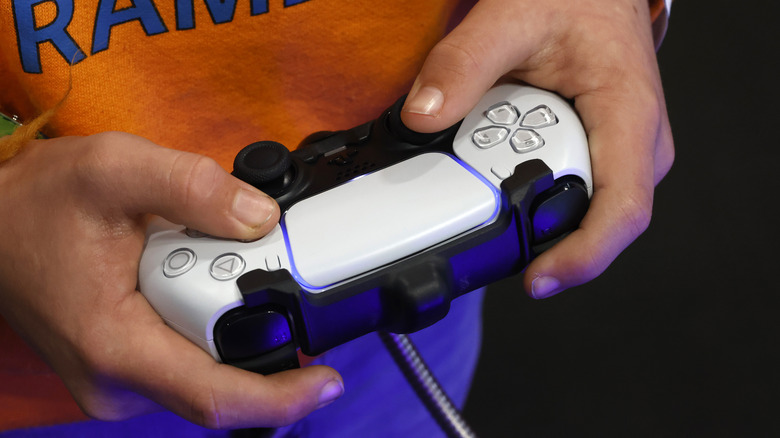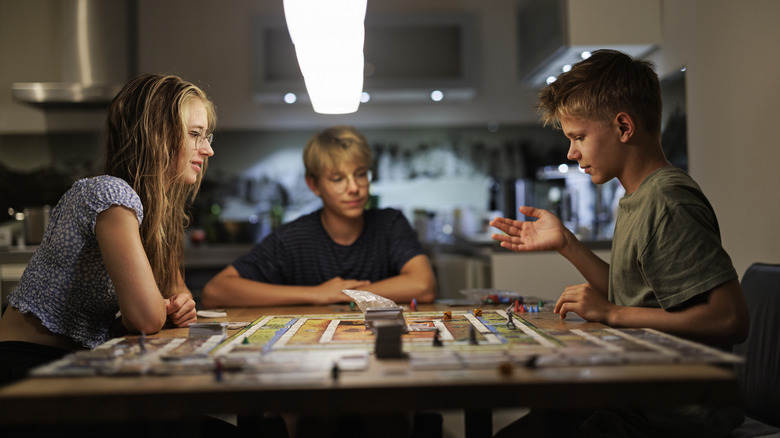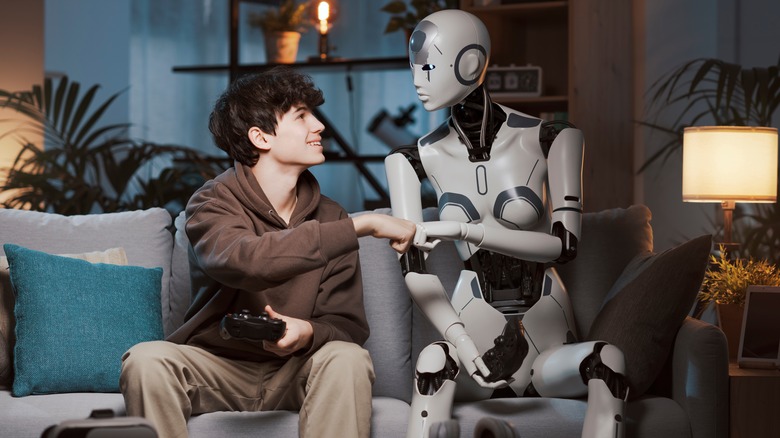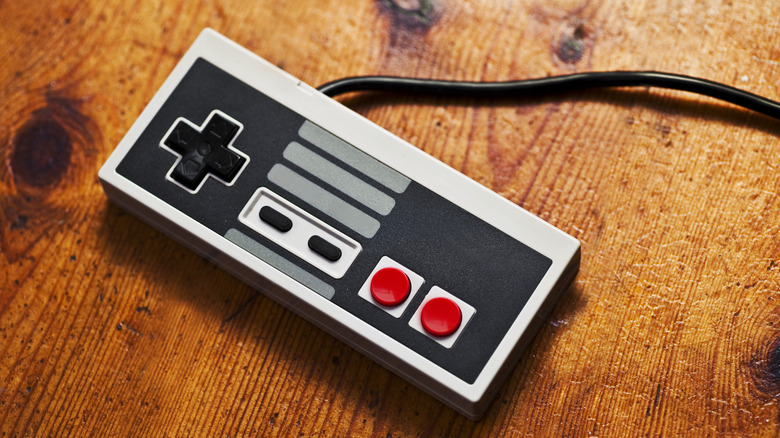
When you invent a device or even a specific concept, you probably want to make sure nobody can steal your ideas and claim it as their own — or at least keep them from profiting off your work without paying for permission. To ensure this legal protection, inventors file patents, which are legal documents that tie them to a device or concept’s creation. However, the very notion of filing a patent is tricky because the wrong patent can cause tons of problems. Other times, a patent could be downright worthless or silly.
The video game industry is rife with questionable patents. Most tackle gameplay mechanics that link ideas to specific studios and publishers, even if the logic behind these patents is shaky. For instance, Nintendo patented the sanity system of “Eternal Darkness: Sanity’s Requiem,” which might be why nobody has developed a sequel to this classic GameCube title. In addition, sometimes a company patents a piece of video game hardware using questionable thinking. Did you know that after Nintendo invented the D-pad, the company patented the control input, forcing first and third-party manufacturers to come up with their own version for similar inputs?
That’s only the tip of the strange video game peripheral patent iceberg. Here are 10 crazy patents for game consoles and accessories that make you question what was going through the heads of those involved.
A console that doesn’t allow unauthorized peripherals
How do you play video games? Most titles accept standard controllers, especially if the game was released on a console. However, some require or recommend more specialized devices. For instance, if you play “Rock Band,” you need the guitar controller for a more authentic experience –- and because the game doesn’t accept standard controller inputs. Once upon a time, you could play rhythm games with the controller packaged in with the console, but that’s not always the case anymore. We might have a patent to thank for that.
In 2015, Activision filed a patent for a “Videogame peripheral security system and method” that can be viewed on Justia. This details gaming hardware that can “prevent against the use of certain videogame peripherals with unauthorized videogame software” via “protected” and “unprotected” inputs. These can include components such as whammy bars and steering wheels. The patent states the console would lock out these inputs unless it receives the unlocking message from the game.
This idea is wild because deep down, specialized controllers share the same inputs of normal controllers, they just have different layouts and values set for input sensitivity. Steering wheels, for example, are essentially just analog sticks that can only go left and right. One might ask why anyone would ever want to lock out controllers, and the answer is probably money. If someone buys a used copy of “Rock Band,” they would also need to buy a guitar controller unless they already own one. Let’s just hope nobody gets the bright idea to use the patent to lock gamers out of using third-party controllers.
Temperature haptic controller
Controller feedback has come a long way. Back in 1996, you had to buy an external pack to experience haptic rumbles, but now motors are built into controllers and are capable of rendering different reverberation levels to simulate different effects. The PlayStation 5’s DualSense controller also crams in gyro aiming, speaker, touchpad, and trigger motor components, yet Sony might not be done adding features.
Exputer reported in 2020 that Sony filed a patent for something simply called “Controller.” Not a particularly descriptive title, perhaps, but the item’s capabilities paint a better picture. According to the patent, the device will utilize “elastic members” (their words, not ours) that can alter their shape and hardness and even simulate different temperatures.
Given the timing and description of the patent, the controller might reflect Sony’s plans for a PlayStation 6 DualSense 2 controller or a DualSense Edge successor. The DualSense is already one of the more advanced console controllers out there, but this patent sounds like something out of science fiction.
If the so-called elastic member works as described, then it could potentially simulate the sensation of rock climbing by rumbling whenever a character’s hands move from handhold to handhold while also deforming to simulate the rocky texture of the cliff face. It could also change temperatures to mimic the feel of hot, sunbaked rocks. Of course, this patent by no means guarantees the next PlayStation controller will include all those features, but if it does, other companies will have to pay Sony for permission to copy their homework.
Server-based toys-to-life game
Outside of a few holdouts, the toys-to-life fad is dead. Nintendo is probably the only company still making them — thanks to its Amiibo line – but production has dialed down ever since “Super Smash Bros. Ultimate” stopped receiving new fighters. Of course, if you purchase a toys-to-life figure, you can still use it as long as you own its requisite game.
Seeking to get a head start on the market, in 2012 Activision filed a patent for “Server based interactive video game with toys,” which is available on Justia. While the title is a mouthful, the patent is fairly self-explanatory. The document describes a gaming platform that can communicate to toys-to-life figures, although the statuettes wouldn’t store any character progress or data. That all would be stored on a server, and the toys just tell the game what server-side data to access.
Given that the patent originated with Activision, the idea sounds like it was intended for an always-online version of “Skylanders.” Unlike an always-online spin-off such as “Skylanders Battlecast,” the patent would have still required the Skylanders figures. While the hypothetical game would have likely received monthly events and content updates, the idea to change the figures from mobile memory cards to passkeys is confusing since they were designed to store player progress. If all that data is on the server, then the figures serve no purpose. Plus, once the servers inevitably shut down the toys would have been just plastic paperweights.
While the “Skylanders” series died out before we could see this patent in action, don’t be surprised if someone tries to copy this idea if toys-to-life products see a resurgence.
Toys-to-life board game
While many board games are standalone products, expansions notwithstanding, some implement digital components and interplay. For instance, “Descent: Legends of the Dark” utilizes 3D miniatures and boards, yet most of the action, from combat to player progress, is tabulated in a companion app. So what if you could play a game that was the other way around?
In 2020, a company Blok Party Inc. filed a patent dubbed “Virtual game console using multiple NFC devices simultaneously.” According to the filing on Google Patent, the device would consist of a large, proprietary touchscreen device acting as a table combined with multiple NFC figurines. All of these devices would interact with each other and track the locations of NFC figures to provide experiences with the tactile nature of board games and the presentation and streamlining of video games.
While the patent doesn’t list any supported games, it mentions popular properties such as “Dungeons & Dragons” and “Magic the Gathering.” One could easily picture these devices supporting a “Dungeons & Dragons” campaign where the touchpad changes backgrounds to reflect campaign locations, and every character is tracked through NFC tokens. Not only would this make sessions more exciting, but it would give game masters a helping hand. Instead of having to keep track (and potentially lose track) of the statuses and locations of 20+ goblins, the game would do it for them.
As for the patent’s use with “Magic the Gathering” or similar trading card games, one only needs to watch an episode of “Yu-Gi-Oh!” to understand the raw potential.
Robotic gaming companion
At times, playing games on a couch with friends feels almost a bygone pastime. Virtually every modern multiplayer game requires an online connection, and local co-op games have become increasingly rare. Modern design almost feels like it disincentivizes playing games while a friend cheers you on. However, Sony might be experimenting with an artificial alternative.
As reported by Business Insider in 2020, Sony filed a patent for a “Robot as a joint viewing player who experiences sympathy with a user.” IGN dug a little deeper into the patent and found that it outlines a robot that, according to its description, would track players via “feeling indexes” and biological sensors. Then the robot would communicate with its owner and react to game progress accordingly. Sony also claimed the pair would bond by using a “love index” that records owner interactions with the robot. According to the patent, the user and companion bot could also watch TV together -– it’s unclear if the robot would react to screentime with rival consoles.
Sony’s patent sounds like a next-generation Furby with console integration, partially because the robot is portrayed as a fuzzy creature. That alone could make or break many sales. However, assuming Sony goes ahead with all these features, it is probably going to end up being an expensive accessory. Still, a robotic gaming helper could serve as a decent replacement for a cat or dog sitting on a user’s lap if they can’t afford one or are allergic.
Console with multiple disc trays
For most of the history of video games, publishers and manufacturers distributed their titles by printing data on discs and cartridges. While these types of physical media are reliable, you have to remove one and insert another if you want to swap games. The only way around this design necessity is to buy digital games, but there was a time that someone envisioned a different solution.
In 2012, Johnny Brandon Saoud patented his idea for a “Video game player with extra disc trays,” which can be viewed in the Google Patents database. The name says it all — Saoud outlined plans for a console that could hold multiple game discs at once, and players could alternate between them remotely to play different games. While owners would still have to insert some discs into the console, they wouldn’t need to remove and replace them every time they wanted to stop playing “Blue Dragon” and go a few rounds in “Halo 3” multiplayer.
While the design sounds unnecessary since it only takes the average gamer a few seconds to change discs, Saoud made an argument that his console would be ideal for players who are sick or injured. Perhaps at one point, the multidisc console could have been a mainstay in hospital rooms where patients had to lie in bed for days or weeks. Saoud’s patent could have been adapted to Xbox and PlayStation consoles so patients could swap games without getting out of their beds or asking a nurse for assistance. However, with the advent of digital games, this patent has become superfluous.
Facial authentication game console
Securing your personal devices is a crucial part of owning them. Usually, you only need a password, but that comes with its own issues. If a thief steals the device after you input the code, there’s not much you can do. However, one company dreamt up an alternative method to provide more dynamic security.
In 2017, Sony filed a patent for a “Public viewing security” application, which is available for review on Justia. The device would be built into a “computing device” and would constantly monitor the user. So long as they are in view, they can use the device. However, once an “unauthorized user” is detected, the patented gadget would initiate a “privacy mode” that would only deactivate once the intruder is no longer within viewing range. The security device would be so precise that it could recognize every detail of an authorized and unauthorized person down to their retinas.
Admittedly, the patent doesn’t list any game consoles by name and could be applied to laptops, tablets, and mobile devices, but it wouldn’t be out of place in the PlayStation landscape since the console already has several privacy settings. Hypothetically, one could set the console to change displays so prying eyes can’t watch what they’re playing, or they could set the device to lock drives so thieves couldn’t access their info. Of course, this feature would only work if Sony produced a PlayStation 5 or PlayStation 6 with a camera, and we all know what happened the last time a console manufacturer tried to push a gaming camera on players.
Controller stand
In the early days of gaming, third-party accessory manufacturers threw everything but the kitchen sink at gamers to see what they liked. This practice resulted in some really weird accessories such as the Konami LaserScope or the Power Glove. As you might imagine, some companies tried patenting these questionable concepts.
As is seen in the Google Patent database, JVW Enterprises Inc. patented something called the “Apparatus for playing home video games” in 1982. The device consisted of a “riser” that extends up from a base that rests on a chair, and a game controller would rest on the top. The intent was to secure controllers so players would only need to hold them with one hand while reducing the risk of the cord being yanked out of the console.
The dark secret of this patent is that it is completely pointless. Even though it’s supposed to let players hold a controller with one hand, if they did that, they wouldn’t be able to use the controller since most games require two hands on the buttons at all times. Plus, this patent isn’t the only time someone tried to make an accessory to let gamers hold controllers in alternate ways. In 1991, Pressman Toy Company released the Speedboard, which was just a fancy piece of plastic players could rest the NES controller on so they could push buttons without holding the device. It was pointless, and it would have been the same for the patented riser.
Toys-to-life controller
The “Skylanders” series was the most popular toys-to-life game at the height of the toys-to-life craze. While you couldn’t access certain levels without specific characters, the figures weren’t expensive, and even if you couldn’t find your favorite, you could usually buy another with the same ability required for the level. However, one patent might imply that the toys-to-life business model could have gone in a completely different direction.
Take, for example, this Warner Bros. Entertainment filing in the Google Patent database from 2000 called “Unlocking secrets of video games.” Don’t worry, the company didn’t patent Easter eggs, hidden bonus levels, or secret weapons. However, it did patent a system that would unlock new levels and features depending on what controllers players used. According to that patent, a game could accomplish this by determining a controller’s manufacturer and locking some features depending on the brand.
To be fair, this isn’t the first time a company tried restricting content because of controllers. 1999’s “Ape Escape” is a PlayStation platformer that tasks players with capturing escaped apes with a variety of in-game gadgets. Unlike prior games for that console, “Ape Escape” explicitly requires the DualShock controller — the original PlayStation controller simply doesn’t have enough inputs. Warner Bros.’ patent, meanwhile, reads like a concept for a game that would force players to buy a library’s worth of controllers and would lock out entire levels if players didn’t have a full set.
It’s possible this idea eventually led to the creation of toys-to-life figures, as those would be more financially viable for consumers than purchasing expensive controllers.
Toys-to-life network
Households today generally have quite a few smart devices that connect to a home Wi-Fi. You can control your air conditioning, keep an eye on your front door’s Ring camera feed, and turn lights on and off if they’re synced to your router. However, even when connected to Wi-Fi, smart devices usually remain isolated from one another — you can’t brew a cup of coffee by pressing a button on your fridge. So what if you could play unique levels of different video games just because you happen to own both?
In 2023, Activision filed a patent for a concept dubbed “Internet of things based video game play,” as seen on Justia. The idea was to link a game console to a server, and any electronic devices that were connected to the same network as the console could be detected by the server and used to unlock new game levels and associated NPCs. The server could add anything from landmarks named after devices to entire levels bearing their themes.
The concept sounds a lot like the Nemesis system from “Middle-Earth: Shadow of Mordor.” In that game, bosses are orcs with randomized strengths and weaknesses that make each player’s experience unique. Activision’s idea could potentially do the same but for game topographies. Picture an open world where the flat Fitbit Arena stands in one player’s game, but in another it’s replaced by the towering Samsung Bespoke Fridge Tower and Amazon Echo Square. Of course, the real question is — would that make for a good experience? In this situation, the rest of the game would be the deciding factor.



















